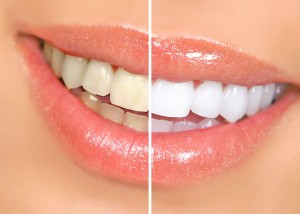-
Mayo Clinic Q and A: Many safe choices available to help whiten teeth
 DEAR MAYO CLINIC: What is the most effective way to whiten teeth? Is it worth it to pay the extra expense for treatment from a dentist, or do the over-the-counter options work just as well? Are they safe for your teeth?
DEAR MAYO CLINIC: What is the most effective way to whiten teeth? Is it worth it to pay the extra expense for treatment from a dentist, or do the over-the-counter options work just as well? Are they safe for your teeth?
ANSWER: There are quite a few choices available if you want to whiten your teeth. The approved products — both those you can buy at drugstores and those available from your dentist — are safe. Just make sure you follow the directions carefully. Many teeth whiteners are quite effective, particularly if you use them for an extended period of time. If cost is a concern, try the over-the-counter options first. If those don’t give you the results you want, then talk to your dentist about other choices he or she offers.
One of the simplest options is whitening toothpaste. It whitens teeth by removing surface stains, such as those caused by drinking coffee or smoking. Some whitening toothpastes contain the chemical blue covarine. It stays on the surface of the teeth and makes them appear less yellow.
When used twice a day, whitening toothpaste takes about two to six weeks to make teeth appear whiter. Whitening toothpaste that contains blue covarine can have an immediate effect. The effects of whitening toothpaste usually are not dramatic. It can’t change the natural color of your teeth or lighten a stain that goes deeper than a tooth’s surface.
Many of the other products you can buy without a prescription, such as whitening strips, involve bleaching your teeth. They are generally safe and often provide better results than just using whitening toothpaste.
If you would like your teeth to be whiter than can be achieved with these products, several choices are available from a dentist. These whitening methods tend to be more effective and last longer than nonprescription products, but they are also more expensive.
One possibility many dentists offer is an at-home treatment. The dentist makes an impression of your teeth and uses it to create a tray in which you place a solution that contains a bleaching agent called carbamide peroxide. You wear the tray on your teeth at night. After about two weeks, many people see a significant difference in the whiteness of their teeth. The results usually last about two years.
The other choice is a treatment performed in the dentist’s office. This typically involves using a solution that contains hydrogen peroxide to bleach your teeth. The whitening can often be accomplished in a series of about four visits to your dentist, with the appointments usually lasting less than 30 minutes. One drawback is that the solution can burn your gums, so your dentist needs to carefully protect your gums with a barrier during the procedure.
Another risk associated with all bleaching options is that they can make your teeth more sensitive. Many manufacturers have tried to minimize this problem, though, by adding substances such as potassium nitrate and fluoride to their products that help minimize tooth sensitivity.
It is important to understand that none of the teeth whitening options currently available are permanent. Over time, food and drink, along with the natural process of aging, will cause your teeth to darken again. That means whatever whitening method you choose, eventually you will need to repeat the process if you want to maintain the whiteness of your teeth long-term. — Phillip Sheridan, D.D.S., Dental Specialties, Mayo Clinic, Rochester, Minn.
Related Articles







